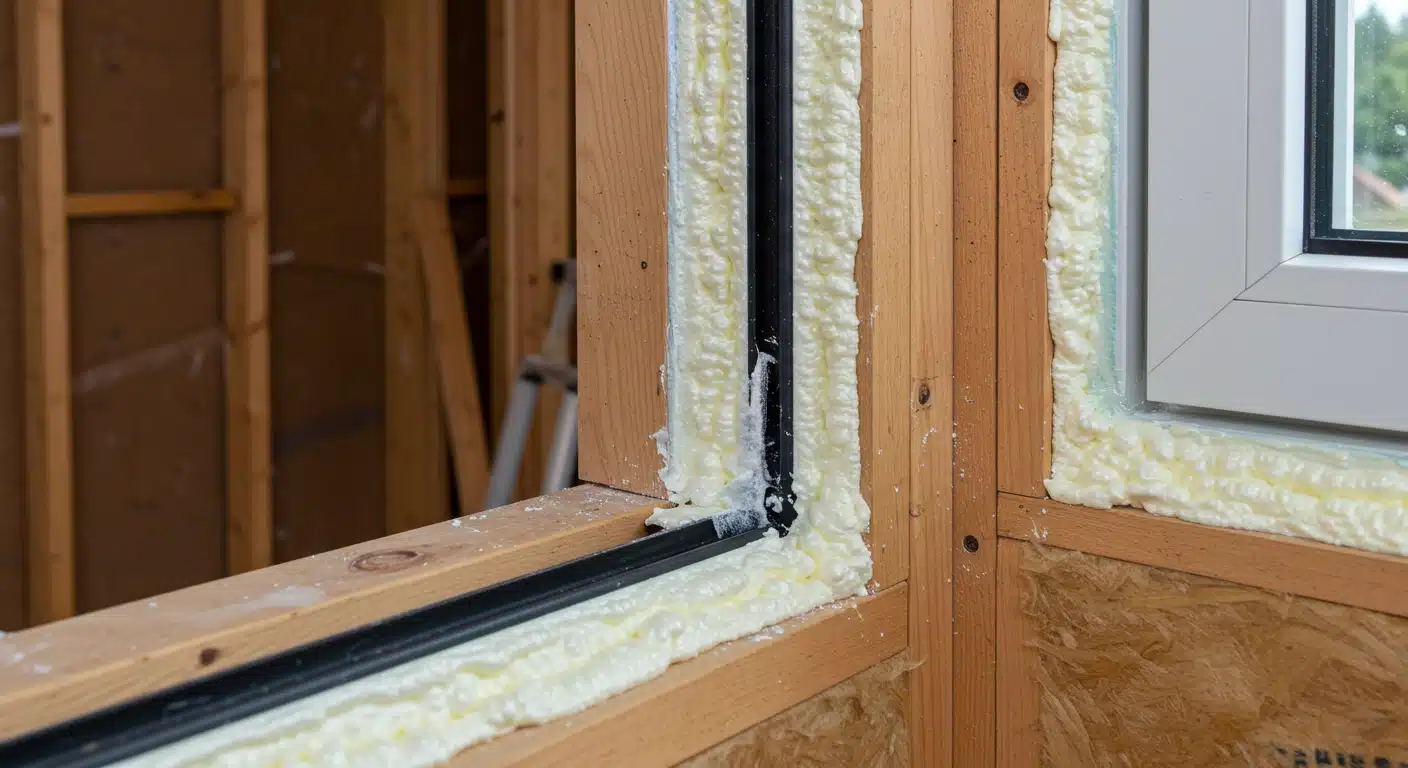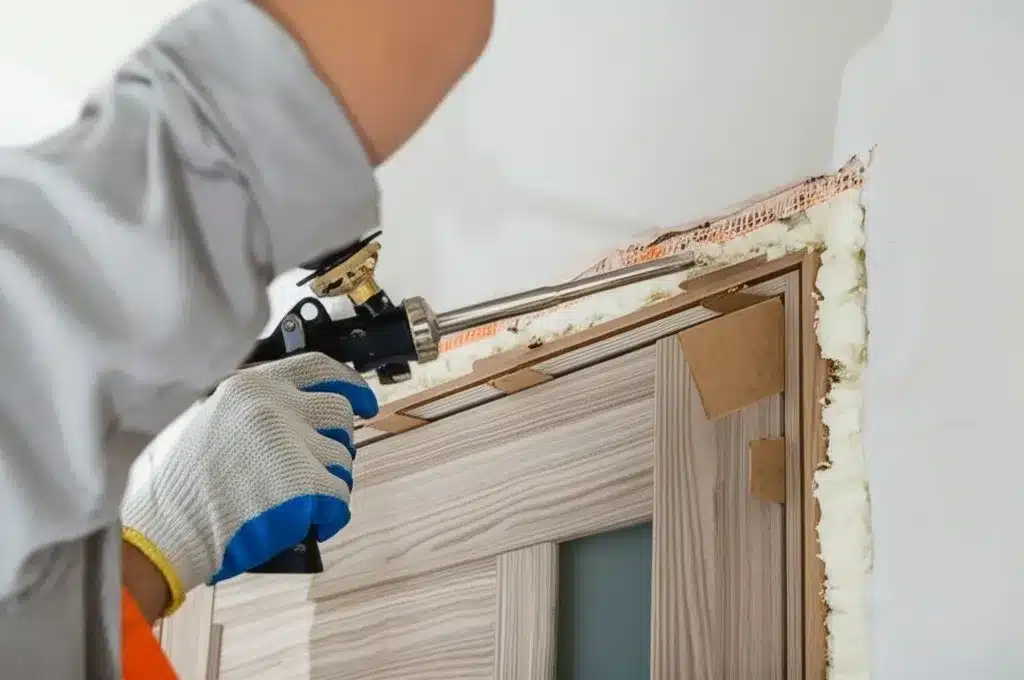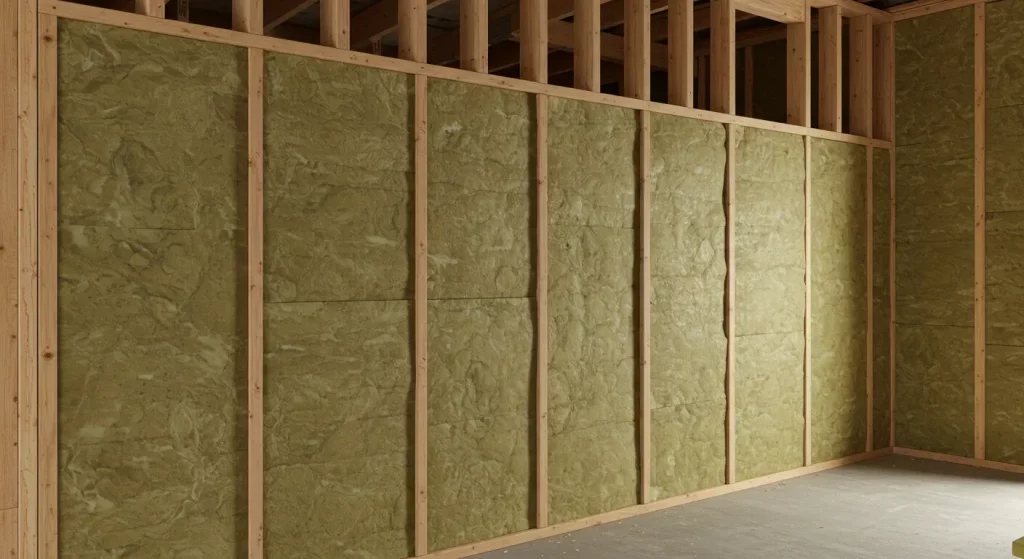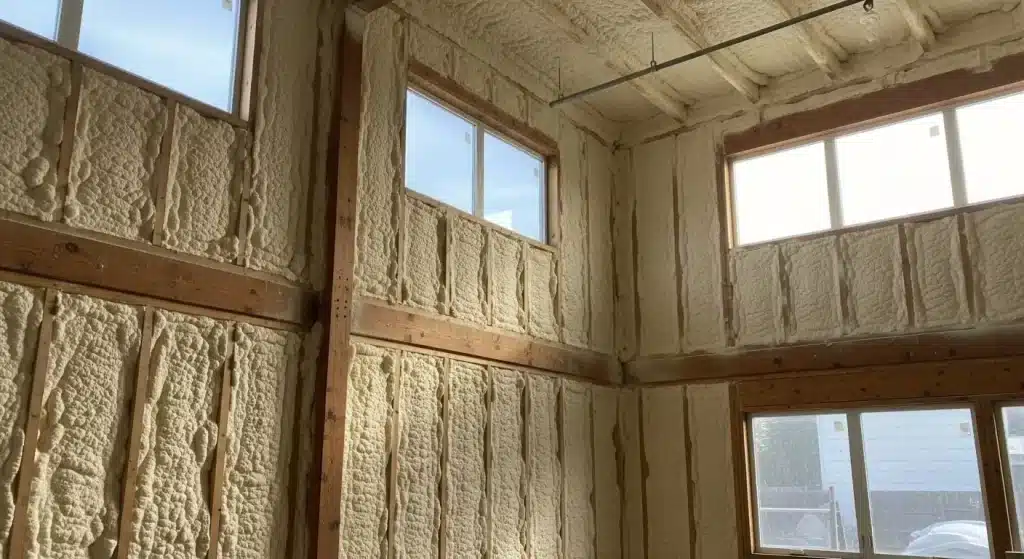Proper air sealing is a critical component of residential insulation strategy in Fresno, CA, due to the region’s extreme temperature swings and high summer heat. Without controlling uncontrolled air leaks, insulation cannot effectively stabilize indoor temperatures. Sealing gaps and cracks in attics, crawl spaces, and around fixtures significantly reduces energy loss, boosts HVAC performance, and enhances indoor comfort.
Air sealing directly addresses hidden airflow paths that bypass insulation altogether. Fresno homes often suffer from leaky attics and crawl spaces, which lead to hot air intrusion during summer and warm air loss in winter. By combining effective insulation with air sealing, homeowners can reduce total heating and cooling costs by up to 20% (Energy Star).
Key Differences Between Air Sealing and Insulation
| Feature | Air Sealing | Insulation |
|---|---|---|
| Purpose | Blocks airflow through gaps and cracks | Slows heat transfer through building layers |
| Materials Used | Caulk, spray foam, weatherstripping | Fiberglass, cellulose, spray foam |
| Target Areas | Attic hatches, wall joints, ductwork gaps | Walls, attics, crawl spaces |
| Role in Energy Efficiency | Prevents conditioned air leakage | Reduces heat gain or loss |
| Ideal Application Time | Before or during insulation installation | During new build or retrofit |
Why Fresno Homes Require Both Solutions
Climate-Specific Challenges
Fresno’s climate brings prolonged summers with high daily temperatures (averaging 96°F in July) and cold winter nights. Without a tight air barrier, insulation alone cannot prevent thermal exchange. Homes built before 2000 often lack comprehensive air sealing, resulting in high utility costs and inconsistent indoor temperatures.
Bonus Tip
Inspect attic access points and light fixtures these are frequent leak spots that standard insulation may not address. Use high-performance spray foam or caulk to seal these areas before insulating.
Performance Data and Technical Insights
| Metric | Air Sealing Only | Insulation Only | Combined (Optimal) |
|---|---|---|---|
| Estimated Energy Savings (%) | 10-15% | 10-15% | 20-25% |
| Air Leakage Reduction (%) | 30-40% | 0% | 35-50% |
| HVAC System Runtime Reduction | Minimal | Moderate | Significant |
| Typical ROI Period | 2-3 years | 2-4 years | 1.5-2.5 years |
| Comfort Improvement Level | Moderate | Moderate | High |

Things to Consider Before Making a Decision
- Home Age and Construction Type: Older structures are more prone to leakage. Homes built pre-1980 often have poor air sealing.
- Ductwork Location: Systems running through unconditioned spaces need added sealing.
- Thermal Imaging Results: Use diagnostics to identify leakage before adding insulation.
- Budget and ROI Goals: Combining insulation and sealing offers faster returns than upgrading one system alone.
- Humidity Management: Air sealing prevents moisture-laden air from entering insulation layers and causing mold.
Real-World Market Data
- 88% of homes in California are under-insulated or poorly sealed (California Energy Commission, 2024).
- Homes in Fresno sealed and insulated to current standards save an average of $460/year in energy costs (U.S. DOE 2023 Residential Building Survey).
- Air leakage accounts for up to 40% of heating and cooling energy use in the Central Valley (EPA, 2023).
Most Relevant Services from Supreme Spray Foam Fresno
- Residential Spray Foam Insulation: Seals and insulates with a single application for maximum efficiency.
- Attic Insulation: Targets the highest point of energy loss in most Fresno homes.
- Crawl Space Spray Foam Insulation: Reduces airflow from unconditioned areas below living spaces.
- Spray Foam Repairs: Restores insulation integrity and addresses compromised seals.
Common Questions About Air Sealing and Insulation
Where should air sealing be done first?
Begin with attics and crawl spaces, then move to doors, windows, and wall penetrations.
Can insulation be installed without air sealing?
Yes, but the result is reduced efficiency and comfort. Leaks undermine insulation performance.
Does spray foam insulation eliminate the need for separate air sealing?
Closed cell spray foam can do both, but open cell may still require targeted air sealing.
Is it possible to seal a home too tightly?
Not with proper ventilation. Homes should be sealed tightly and ventilated strategically.
Get Expert Insulation Guidance
Contact Supreme Spray Foam Fresno to discuss options for combining air sealing with insulation upgrades. Get experienced guidance based on local climate needs and proven material performance.
Phone: (559) 545-0800
Email: [email protected]
Frequently Asked Questions
How can I tell if my home has air leaks?
Look for drafts, dust near baseboards, or inconsistent temperatures. A blower door test gives precise data.
What type of insulation works best with air sealing?
Spray foam insulation, especially closed cell, performs well in combination with air sealing.
How long does air sealing last?
Professionally applied sealants typically last 20 years or more, depending on materials and conditions.
Can air sealing improve indoor air quality?
Yes, by preventing pollutants and allergens from entering through gaps in the building shell.
What’s the best time of year to seal and insulate a home in Fresno?
Late fall or early spring—before extreme temperatures set in—are ideal for implementation.





